Is a Cavity in a Diamond of Any Concern?
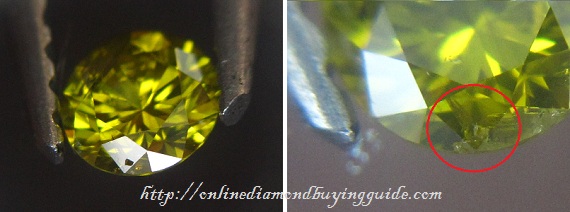
Does this “hole” on the diamond’s surface scare you when seen under magnification?
First of All, What is a Diamond Cavity?
Cavities are surface indentations or fracture cracks that expand towards the inside of a diamond. Basically, you can think of a cavity inclusion as another name for a “hole” in the diamond.
As a consumer, is a cavity in a diamond something you should worry about?
Well, it depends on a case by case basis. In this article, we will find out how cavities are formed. You will also see real life examples of diamonds with cavities and the things to look out for when you come across such diamonds.
Let’s dive in…
How a Diamond Cavity is Formed? (Indicated by Red Arrows)
In most cases, a cavity is created during the polishing process when a feather near the surface is breached or when a crystal inclusion gets dislodged from the diamond’s body. This creates an empty void and leaves an opening on the diamond’s surface.
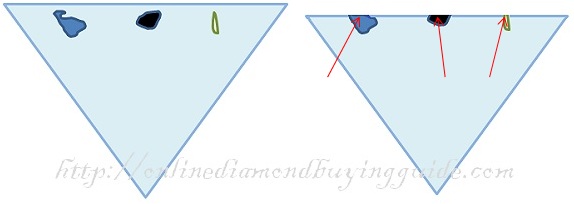
Inclusions like feathers, clouds or crystals can break to the surface during cutting…
Why Don’t Cutters Remove the Cavities During Polishing?
You might be wondering why the cutter didn’t polish off the cavity if they could do so and that’s a fair question. The answer really boils down to economics.
Most of the time, it would require a severe weight loss of the rough stone to remove a cavity inclusion completely. As a result, most cutters opt to retain weight at the expense of lower clarity grades since the value of a larger sized diamond is usually higher than an improvement in clarity rating.
Should You Avoid Diamonds With Cavities?
Personally speaking, I don’t like having cavities as inclusions in my diamond. I will generally avoid cavities in SI1-SI2 diamonds especially if they are the clarity grade makers.
The reason behind this is that bigger cavities tend to turn dark during normal wear because they can trap dirt and oil overtime. The location of the cavity is also a factor I would look at because of durability reasons.
To illustrate this, here are a couple of diamond examples I would avoid…
In the first example, a large cavity is found near the edge of the cushion cut diamond. This can pose some risk of the diamond chipping when you accidentally knock the ring against a hard surface.
Also, the cavity also takes on a greyish color instead of a translucent appearance which makes it easily seen with the naked eye.
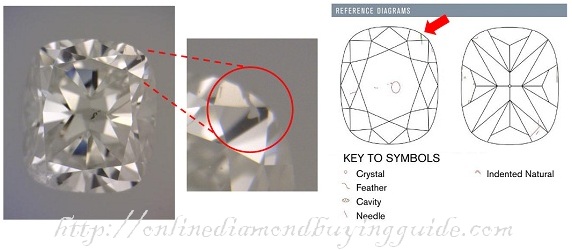
Dirt can accumulate in the cavity and create a dark appearance.
Location Matters When It Comes to Inclusions
In this example, the cavity is found on the bottom (pavilion) side of the stone. You need to tread carefully here and make sure that the cavity isn’t large enough to be an issue. The reason behind this is that once the stone is set, it would be very difficult for effective cleaning if dirt gets into the crevice.
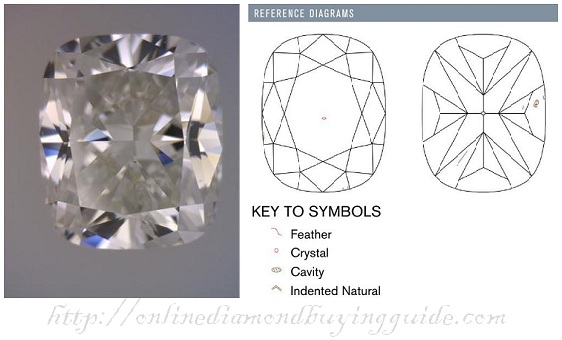
If the cavity gets clogged, how would you clean the stone effectively?
The size and location of the cavity and diamond’s clarity grade also plays a huge role too. For example, if they are located in an inconspicuous area, they are usually more acceptable and won’t be easily noticed by a casual viewer.
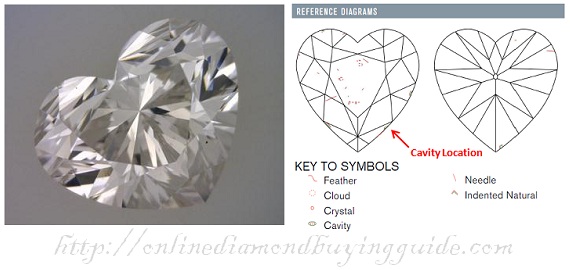
Example of a great looking SI2 diamond with no significant clarity issues.
When Is It Going to be a Really Bad Thing?
Every once in a while, VS clarity diamonds with cavities do show up.
Generally speaking, diamonds with clarity grades of VS2 or better would not have durability issues and are relatively “safe” choices. Most of the time, inclusions found in VS stones are insignificant and don’t negatively affect the diamond’s appearance.
But, it’s not the case with the VS2 oval diamond below. Here, we see a rare case where a VS2 clarity grade consists of inclusions that are detrimental to the diamond’s beauty and durability.
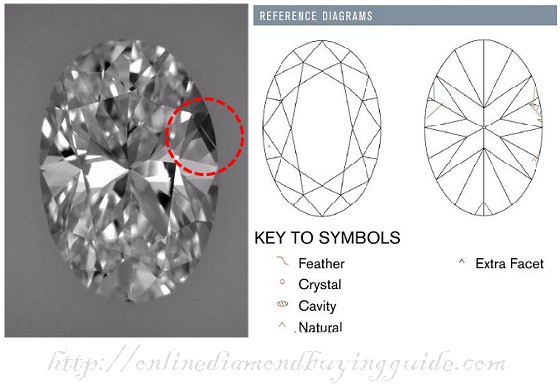
The large cavity at the girdle creates an awful dark patch and causes durability issues.
So, What’s The Bottom Line?
Like any other types of inclusions, a lot depends on the nature of the inclusions being benign or malign.
If you are serious about buying a diamond with cavity inclusions, I recommend examining the inclusions at different viewing angles with a microscope. You should also consider the cavity’s depth and exposed surface size before deciding to reject or purchase the stone. And it doesn’t hurt to be doubly sure and have the diamond checked by a professional.
Personally speaking, I tend to err on the side of caution and will avoid diamonds with cavities just to be safe. I don’t see a need to settle on a diamond with cavity inclusions when there are so many options available in the market.
With that said, I hope you found this article useful. Now I want to hear from you. Leave a comment below to let me know if you would consider buying a diamond with a cavity inclusion and if you have any questions, feel free to get in touch as well.
Related Articles
Leave A Comment


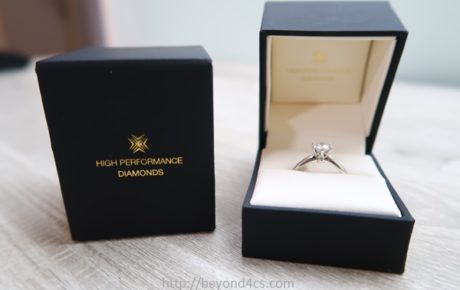
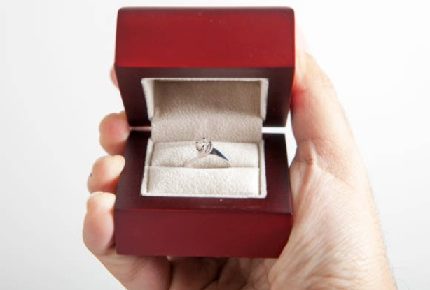
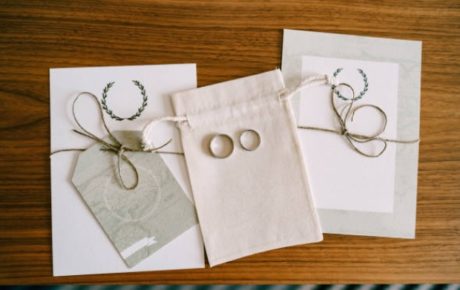









17 Comments
My girlfriend wants a J as it is the initial of my name and getting a colorless stone for a yellow gold setting would be pointless. My concern is if this diamond would turn out too yellow with the yellow gold setting and if it would be mistaken as a fancy color diamond instead. Our local jeweler has an Oval J SI 1 with strong fluorescence but my gf did not like that it has a cavity. We were told that a J without fluorescence will look brownish, not yellowish (we clarified this with them as we are aware of the slight yellow tint J color has).
I would just like to ask if I should go ahead and purchase the diamond or if I should wait to get something better for the budget (perhaps with fluorescence so it could appear whiter?) based on your experience/knowledge.
Any insight from you would be great. Thanks in advance!
The local jeweler is taking you for a ride. It’s rubbish that a J without fluorescence will look brownish. Any jeweler who says that will have immediately lost their credibility. And let me guess, they are trying to sell you a diamond with fluorescence?
And for the record, fluorescence in itself is something I love that the public actually dislikes.
I did a search for you and would recommend this diamond: https://www.jamesallen.com/loose-diamonds/oval-cut/1.02-carat-j-color-si1-clarity-sku-4933001
This is a beautiful diamond and it’s not easy to find a well cut oval; much less one with the correct level of fluorescence.
If you are worried about a diamond looking too yellow, don’t buy a yellow gold setting to begin with. A D color diamond will look yellowish in these kind of settings much less a J.
As for color, you can get an idea of how “yellow” the diamond will be in a yellow gold setting.
https://www.jamesallen.com/engagement-rings/solitaire/18k-yellow-gold-2mm-comfort-fit-solitaire-engagement-ring-item-1484
Under drop down, select oval shape and then look through the previously purchased rings.
I’ve sought your advice a year ago on selecting a 1.0 to 1.2 carat diamond for an engagement ring. However, the plan changed and eventually I did not make any purchase. Now I am starting my stone hunting again on JA.
I am looking for a color in D, E, and F; for clarity, I think I want VVS2 and above but this is not a must as long as it’s eye clean. The most important indicator is cut, thanks to your teaching. I see that hearts and arrow diamonds are quite a bit more expensive on JA, so I am not sure if I *have* to go for those. I also assume that I should find a stone with an HCA between 1 and 2 to be used on a right, is this correct?
It would be so kind of you if you could pick a few diamonds that you find worth a purchase or consideration. I tried to look last time, but the diamonds under 20x scope on JA all have some blemishes, the ones without have a sky rocketed price tag, so I feel quite discouraged to make a decision. Lastly, I should not forget to mention that my budget is below 15k USD. The higher the caret within this price range, the better, but I do not want to make a compromise on cut or color.
Again, thank you so much for your help and time!
The HCA tool is not that useful for determining the cut quality of the diamond.
https://beyond4cs.com/faq/is-the-hca-score-always-reliable/
The tangible data is more important.
I did a search and would recommend this diamond:
https://www.jamesallen.com/loose-diamonds/round-cut/1.21-carat-f-color-vvs2-clarity-true-hearts-cut-sku-4687408
It’s extremely well cut and offers good value for money at its carat size.
If you want a better color, then this would be the next best stone: https://www.jamesallen.com/loose-diamonds/round-cut/1.14-carat-d-color-vs1-clarity-true-hearts-cut-sku-3634658
Also, don’t get too caught up by inclusions. You are examining the diamonds under extreme magnification. In real life, it is far from that. That said, if it psychologically bothers you about inclusions, get higher ratings. Ultimately, the enjoyment of the diamond ring is key.
Read this: https://beyond4cs.com/clarity/resize-technique/ and feel free to use this technique to explore the options above.
I think I have cured my psychological difficulty by focusing more on the ideal-scope images and less on picking the marks in the diamonds themselves. I think the first one is great, only I wonder if it’s that noticeable under sunlight between the F color and D color. I know it depends on different people’s senses and the size of the stone. At 1.2 carat, is it large enough that a jump from F to D is significant enough to feel somewhat appalled by the warmer color? On the website by looking at the pictures, I can tell only a little bit difference between your two recommendations, but I don’t know if sunlight or other different lighting conditions will magnify this difference. As it is shown in the pictures, I am fine with the difference.
I was just thinking about lowering my goal on the clarity, color or even cut to stay within the budget. I found this other diamond here: https://www.jamesallen.com/loose-diamonds/round-cut/1.58-carat-g-color-vs2-clarity-true-hearts-cut-sku-5234224
I am also hesitant between getting the 1.21 one or a 1.58 one. If they are similar to the eye except for size I may just go with the larger one. How much difference to the eyes is between 1.21 and 1.58 ct?
If you goal is to get eyecleanliness, a VS2 would be sufficient subject to case by case basis. If you need a higher clarity for symbolic reasons, then that a VVS or IF may be required.
If your goal is to get an icy white diamond, a G would be sufficient in a well cut diamond. I can tell you with certainty that most people cannot see differences between a D and a well cut G side by side in the face up view. However, I can also understand the stigma among Asians for the need of higher color for societal reasons.
In terms of size differences, https://beyond4cs.com/faq/size-differences-in-carat-weights/ if you are comparing them side by side, the 1.21 and 1.58 will be very obvious. On the hand and in casual viewing, I would say most people may not see a big difference.
If I were to choose, this would be my top choice: https://www.jamesallen.com/loose-diamonds/round-cut/1.58-carat-g-color-vs2-clarity-true-hearts-cut-sku-5234224 and I have a very sensitive eye for color.
Thank you so much for the website, it is very insightful. I’ve read something about pitting and cavities. Do you know what they refer to?
Anyway, I visited a shop and was presented this diamond https://www.gia.edu/report-check?reportno=2287233768
My wife really liked it because of the size, dimensions and the spread of the diamond.
It was proposed to me for $14500. I don’t think the price is worth it but what do you think about the quality of it.
A ‘pit’ is a minute opening on the surface of a diamond that appears like white dots. Unlike cavities, they don’t have depth and are very shallow on the surface of the diamond.
It’s hard to say and I cannot pass any judgment on a cushion cut diamond without looking at details and videos. Cut quality of a cushion would best be assessed via an ASET image. This page has examples of what to look for: https://beyond4cs.com/grading/aset-reference-charts/
If you haven’t yet, make sure you read this tutorial on cushion shapes too: https://beyond4cs.com/shapes/cushion/
If cut quality and performance checks out, then I would go ahead and look at clarity issues. I would be wary of the feather and cavities for an SI2 diamond and this is something you MUST check for eyecleanliness before buying.
Hello. I’m currently having this diamond at Blue Nile checked for whether or not it’s eye clean, as well as any effects from fluorescence and bow tie. It’s a 1.79 SI1 F. The results have not come back yet; however, it has a small cavity on the pavilion. Other than that, it meets all my other criteria (size, price, color, clarity, length to width ratio, table/depth.) The cavity appears to be very small (I went on GIAs website to look at the report in larger detail – the report number is 1333121343) What are your thoughts? Providing everything comes back good, will the cavity impact the diamond? Is it a good value, even with the cavity or should I leave it behind and keep looking? Thank you!
https://www.bluenile.com/diamond-details/LD12597674
The diamond is borderline eyeclean and you might be able to see the inclusions if you squint your eyes upclose at a 5-10 cm distance. And that’s really close up. For a normal viewing distance of 30cm and above, I would say the oval is eyeclean.
Also, this diamond doesn’t have a cavity inclusion. I looked at the grading report and the inclusion on the pavilion is actually a knot. Basically, a knot is another embedded mineral within the diamond. A cavity is an empty hole that is exposed while a knot is one that is filled. So, they are completely different in that regard.
So……did I get a deal or not? GIA graduate gemologist jeweler said I was getting this 2.53 GIA 3x for close to wholesale. Has inclusions, including a cavity, which I learned about here on your site as being basically bad. Jeweler said inclusions, as long as they’re not bad and don’t affect the “look” – particularly sparkle – are fine, as you can’t see them (on mine) with your naked eye. Wasn’t particularly happy with especially the feather inclusion (not knowing about the cavity one) since to me it looks like a gouge when viewed 10x, but jeweler said the price is ridiculously low. Comment? thanks
BTW, forgot to add that I have NO idea where (placement) this cavity is or what it would look like.
Bad is really subjective as different inclusions (in size/color) in different locations can result in totally different appearances. I doubt you are getting “wholesale prices”: https://beyond4cs.com/diamond-prices/
There are so many diamonds in the market and if the inclusions worry you, then I see no reason why you should buy the diamond when there are so many options available.
Hi Paul – a couple Qs if you could please answer:
First is about Hearts and Arrows. Don’t remember the exact words, but jeweler said it’s basically a gimmick to make people pay more, that you can have the same ideal/excellent quality, cut, etc., in a stone without those things. Basically dismissed the need. True? Is it better to pay the premium price for hearts and arrows (if you’re so inclined to spend the money)?
Maybe because I don’t know much about diamonds, but looking at the face of a diamond with hearts and arrows, to me at least, those dark/black arrows in the center are distracting and doesn’t seem to sparkle as much as one that either doesn’t have that/those, or the arrows aren’t as prominent, if you know what I mean. My stone doesn’t have the hearts and arrows feature, but it DOES have what look like the arrows, only not as dark, and they look thinner, not as thick as the true arrows. And boy, does it sparkle!
Second Q is about the sale of a diamond, either to a jeweler or just a regular person: I understand it’s whatever someone wants to pay, but if it’s a GIA stone, with report, would you expect to get close to what you paid for it considering you have those things? Allowing for a jeweler’s lower offer with the expectation of them making a profit upon resale, though not so for a consumer.
For example, if the price of the stone was $21k, how much could one reasonably expect to get from both a jeweler and a regular person?
Some info: 2.53ct H SI2 Round Brilliant 3x. No fluorescence. Could give you the report number if it would be of more help.
Thanks very much for the help you give us know-nothings. Very much appreciated. This is how we learn.
Well it depends on the kind of standards that you want in a diamond and the sparkle/scintillation patterning you want to see. If you don’t care about light performance, then H&A is basically unnecessary. For the record I do. And from experience, vendors who are ignorant and claim that H&A does nothing are either selling poorly cut diamonds or have no knowledge about the topic. In both scenarios, it doesn’t bode well nor reflect well on the jeweler.
There’s more on the topic you can read here: https://beyond4cs.com/hearts-and-arrows/
Now, for your 2nd question. Reasonably, if you can get back even 50% of what you paid at retail prices, you would have done extremely well.
Do you think the cavity in the following GIA # is a dealbreaker, one which could potentially compromise the durability/clarity of the stone? GIA 5343366266 Further to its location, is this an odd place for a prong on a pear? Would tucking it under a prong potentially help its integrity or potentially trap debris that could affect the seen clarity moving forward? Thanks, brother!
The cavity extends from the top to the bottom half of the diamond based on the grading report. Without looking at it in person, I cannot give a 100% accurate assessment but based on experience, I suspect the cavity shouldn’t be too an issue and the prong placement shouldn’t have any issue with it. What I would add is that the grade maker for this pear diamond is the feather inclusion followed by the twinning wisp and not the cavity inclusion.